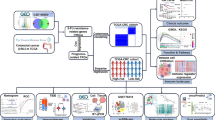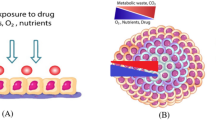Abstract
Objective
Induction of apoptosis in target cells is a key mechanism by which chemotherapy induces cell killing. We have established an in vitro system for determining the chemosensitivity of epithelial ovarian cancer cells to carboplatin and paclitaxel (Taxol). Practical assays to predict the likelihood of individual tumor sensitivity are needed to facilitate the choice of adequate treatment. We sought to determine whether epithelial ovarian cancer cells (EOC) collected from the ascites fluid of patients known to be clinically chemosensitive or chemoresistant to carboplatin and paclitaxel would show a similar response to chemotherapeutic drugs after in vitro treatment.
Methods
Thirteen patients with stage III and IV ovarian cancer treated with carboplatin and paclitaxel were studied. Caspase-3 activation was used as a surrogate marker for activation of chemotherapy-induced programmed cell death. We compared the in vitro apoptotic response to the clinical response of the patients from whom the tumor cells were isolated. Clinical sensitivity was defined as no evidence of disease recurrence for 6 months after optimal debulking surgery and completion of chemotherapy.
Results
Of seven chemosensitive patients, five cell samples treated in vitro had increased caspase-3 activity in response to both carboplatin and paclitaxel. Five of six chemoresistant cases did not show caspase-3 activity in response to only one or to neither agent.
Conclusion
Quantifiable markers of apoptosis such as caspase-3 activation have the potential to predict the clinical response to chemotherapy. Application of this assay in clinical laboratories could optimize the potential for efficient treatment and avoid the toxicities of ineffective drugs.
Similar content being viewed by others
References
Jemal A, Murray T, Samuels A, Ghafoor A, Ward E, Thun MJ. Cancer statistics, 2003. Cancer J Clin 2003;53:5–26.
Sevin BU, Perras J. Tumor heterogeneity and in vitro chemo-sensitivity testing in ovarian cancer. Am J Obstet Gynecol 1997;176:759–66.
Cheng JQ, Jiang X, Fraser M, et al. Role of X-linked inhibitor of apoptosis protein in chemoresistance in ovarian cancer: Possible involvement of the phosphoinositide-3 kinase/Akt pathway. Drug Resist Update 2002;5:131–46.
Ness R, Wisniewski S, Eng H, Christopherson W. Cell viability assay for drug testing in ovarian cancer: In vitro kill versus clinical response. Anticancer Res 2002;22:1145–9.
Fanning J, Biddle W, Glodrosen M, et al. Comparison of cisplatin and carboplatin cytotoxicity in human ovarian cancer cell lines using the MTT assay. Gynecol Oncol 1990;39:119–22.
Suonio E, Lipponen P, Maenpaa J, Syrjanen K, Kangas L, Tuomisto L. Mitotic index in the subrenal capsule assay as an indicator of the chemosensitivity of ovarian cancer. Cancer Chemother Pharmacol 1997;41:15–21.
Eltabbakh G, Piver M, Hempling R, et al. Correlation between extreme drug resistance assay and response to primary paclitaxel and cisplatin in patients with epithelial ovarian cancer. Gynecol Oncol 1998;70:392–7.
Orr J, Orr P, Kern D. Cost-effective treatment of women with advanced ovarian cancer by cytoreductive surgery and chemotherapy directed by an in vitro assay for drug resistance. Cancer J Sci Am 1999;5:174–8.
Konecny G, Crohns C, Pegram M, et al. Correlation of drug response with the ATP tumor chemosensitivity assay in primary FIGO stage III ovarian cancer. Gynecol Oncol 2000;77:258–63.
Taylor C, Sargent J, Elgie A, et al. Chemosensitivity testing predicts survival in ovarian cancer. Eur J Gynaecol Oncol 2001;22:278–82.
Breidenbach M, Rein D, Mallmann P, Kurbacher C. Individualized long-term chemotherapy for recurrent ovarian cancer after failing high-dose treatment. Anticancer Drugs 2002;13:173–6.
Taylor C, Sargent J, Elgie A, Reid F, Alton P, Hill J. The clinical relevance of chemosensitivity testing in ovarian cancer. Cancer Detect Prev 1998;22:305–12.
Baguley B, Marshall E, Whittaker J, et al. Resistance mechanisms determining the in vitro sensitivity to paclitaxel of tumour cells cultured from patients with ovarian cancer. Eur J Cancer 1995; 31A:230–7.
Coley HM. Drug resistance studies using fresh human ovarian carcinoma and soft tissue sarcoma samples. Keio J Med 1997;46:142–7.
Kurbacher C, Mallmann P, Kurbacher J, Hubner H, Krebs D. Chemosensitivity testing in gynecologic oncology. Experiences with an ATP bioluminexcence assay. Geburtshilfe Frauenheilkd 1996;56:70–8.
Cortazar P, Johnson BE. Review of the efficacy of individualized chemotherapy selected by in vitro drug sensitivity testing for patients with cancer. J Clin Oncol 1999;17:1625–31.
Henkels K, Turchi J. Induction of apoptisis in cisplatin-sensitive and -resistant human ovarian cancer cell lines. Cancer Res 1997;57:4488–92.
Gibb R, Taylor D, Wan T, O’Connor D, Doering D, Gercel-Taylor C. Apoptosis as a measure of chemosensitivity to cisplatin and taxol therapy in ovarian cancer cell lines. Gynecol Oncol 1997;65:13–22.
Hannun Y. Apoptosis and the dilemma of cancer chemotherapy. Blood 1997;89:1845–53.
Fisher D. Apoptosis in cancer therapy: Crossing the threshold. Cell 1994;78:539–42.
Hickman J. Apoptosis induced by anticancer drugs. Cancer Metastasis Rev 1992;11:121–39.
Johnstone R, Ruefli A, Lowe S. Apoptosis: A link between cancer genetics and chemotherapy. Cell 2002;108:153–64.
Caserini C, Pratesi G, Tortoreto M, et al. Apoptosis as a determinant of tumor sensitivity to topotecan in human ovarian tumors: Preclinical in vitro/in vivo. Clin Cancer Res 1997;3:955–61.
Cohen GM. Caspases: The executioners of apoptosis. Biochem J 1997;326(Pt 1):1–16.
Cain K, Bratton SB, Cohen GM. The Apaf-1 apoptosome: A large caspase-activating complex. Biochimie 2002;9:203–14.
Buick R, Pullano R, Trent J. Comparative properties of five human ovarian adenocarcinoma cell lines. Cancer Res 1985;45:3668–76.
Behrens B, Hamilton T, Masuda H, et al. Characterization of a cis-diamminedichloroplatinum(II)-resistant human ovarian cancer cell line and its use in evaluation of platinum analogues. Cancer Res 1987;47:414–8.
Kamsteeg M, Rutherford T, Sapi E, et al. Phenoxodiol—An isoflavone analogue-induces apoptosis in chemo-resistant ovarian cancer cells. Oncogene 2003;22:2611–20.
Lounis H, Provencher K, Godbout C, Fink K, Milot MJ, Mes-Masson AM. Primary cultures of normal and tumoral human ovarian epithelium: A powerful tool for basic molecular studies. Exp Cell Res 1994;215:303–9.
Markman M, Hoskins W. Responses to salvage chemotherapy in ovarian cancer: A critical need for precise definitions of the treated population. J Clin Oncol 1992;10:513–4.
Markman M, Bookman MA. Second-line treatment of ovarian cancer. Oncologist 2000;5:26–35.
Song J, Sapi E, Brown W, et al. Roles of Fas and Fas ligand during mammary gland remodeling. J Clin Investig 2000;106:1209–20.
Perez R, Perez K, Handel L, Hamilton TC. In vitro interactions between platinum analogues in human ovarian-carcinoma cell lines. Cancer Chemother Pharmacol 1992;29:430–4.
Janicke R, Sprengart M, Wati M, Porter A. Caspase-3 is required for DNA fragmentation and morphological changes associated with apoptosis. J Biol Chem 1998;273:9357–60.
Provencher D, Finstad C, Saigo P, et al. Comparison of antigen expression on fresh and cultured ascites cells and on solid tumors of patients with epithelial ovarian cancer. Gynecol Oncol 1993;50:78–83.
Metcalf K, Selby P, Trejdosiewicz L, Southgate J. Culture of ascitic ovarian cancer cells as a clinically-relevant ex vivo model for the assessment of biological therapies. Eur J Gynaecol Oncol 1998;19:113–9.
Salmon S, Hamburger A, Soehnlen B, Durie B, Alberts D, Moon T. Quantitation of differential sensitivity of human-tumor stem cells to anticancer drugs. N Engl J Med 1978;298:1321–7.
Sjostrom J, Blomqvist C, von Boguslawski K, et al. The predictive value of bcl-2, bax, bcl-xL, bag-1, fas and fasL for chemotherapy response in advanced breast cancer. Clin Cancer Res 2002;8:811–6.
Wu G, El-Deiry W. Apoptotic death of tumor cells correlates with chemosensititvity, independent of p53 or bcl-2. Clin Cancer Res 1996;2:623–33.
Oyaizu H, Adachi Y, Yaketani S, Tokunaga R, Fukuhara S, Ikehara S. A crucial role of caspase 3 and caspase 8 in paclitaxel-induced apoptosis. Mol Cell Biol Res Commun 1999;2:36–41.
Author information
Authors and Affiliations
Corresponding author
Additional information
This work was supported by a grant from the Ethyl F. Donaghue Foundation to BMK and MBF and by grants from the National Institutes of Health, ROl HD37137-01A2 and R01CA92435-01 to GM.
The authors thank Dr. Reena Jain for assessment of the pathology of the isolated ascites cells, Dr. Bambang Dwipoyono for assistance with caspase-3 assays, and Dr. Eva Sapi for helpful discussions and critical review of the manuscript
Rights and permissions
About this article
Cite this article
Flick, M.B., O’Malley, D., Rutherford, T. et al. Apoptosis-Based Evaluation of Chemosensitivity in Ovarian Cancer Patients. Reprod. Sci. 11, 252–259 (2004). https://doi.org/10.1016/j.jsgi.2003.11.003
Published:
Issue Date:
DOI: https://doi.org/10.1016/j.jsgi.2003.11.003




